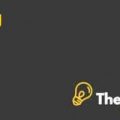
Introduction:
The two developing countries selected for the analysis of their institutional structures are Pakistan and Nigeria.
Background:
Pakistan:
Pakistan’s official name is the Islamic republic of Pakistan and is a sovereign country in south Asia. It is the sixth most populated country in the world with a population exceeding 191 million people. It shares borders with China, India, Iran and Afghanistan. It also has a coast line along the Arabia Sea and the Gulf of Oman.
Pakistan got independence on 14th August 1947 from Britain. Since then Pakistan has gone through many changes in its institution. Pakistan has also faced a number of dictatorships and most of the period after its independence has been under the rule of a dictator. The country is now in a more stable state as the political system of the country has revived and since last 8 years there is democratic government ruling the country.
The economic state of the county is developing as the country is now in a more stable state. Its economy is the 26th largest in the world in terms of purchasing power and 45th largest in terms of nominal GDP. The country in the past was also under the threat of terrorism but from last 2 years the government has taken aggressive action against the terrorists and has almost made them to either surrender or die.
Nigeria:
Nigeria’s official name is federal republic of Nigeria and it is a democratic secular country. It is located in West Africa and shares its borders with Benin, Chad, Cameroon and Niger. It also has a coast line on the Gulf of Guinea in the Atlantic Ocean. Nigeria is the most populous country of Africa having approximately 174 million people and the seventh most populous country in the world.
Nigeria got formally independent in 1960 and then soon after its independence it plunged into a civil war from 1967 to 1970. The political structure of the country was not so stable and the structure alternated between democratically elected civilian government and military dictatorships. It achieved a stable democracy in 1999, soon after this the country went into elections and the very first fairly elected president was handed over the rule of the country.
Nigeria is a multi-cultural country and it has more than 500 ethnic groups. The country can be divided into half for the major distribution of religion in this country, half of the population in Nigeria is Christians and half are Muslims. The minorities of this country are many in number.
The economic state of the country is quite impressive as compared to its political background. The country as of 2015 is the world’s 20th largest economy; its nominal GDP is $500 billion and $1 trillion in terms of purchasing power parity. It has a very impressive debt-to-GDP ratio which is only 11% and it is 8%less than the ratio in 2012. It is considered to be an emerging economy by the World Bank.Analysis On Institutional Structures Case Solution
Institutional structure:
The structures a country possess are the political structure of a country which tells about how the country is governed and by whom it is governed, legal structure of a country tells about the legal and non-legal characteristics of the country and the economic structure tells about the economical inputs and outputs of the economy and how the things work in the country regarding business.
Institutional structure of Pakistan:
Pakistan is a country with lots of misconceptions about it around the world. The country is an Islamic state which is governed under its constitutional laws and regulations which are according to the teaching of Islam. The country is under the process of development and is going through constitutional amendments to make the constitution equitable and free of loopholes.
Political structure:
The political structure of the country is a democratic system headed by the prime minister of the government of the country. The head of the state is the president of the country elected by the members of the national assembly. The members of the national assembly are elected by the public through elections. The system of parliament is bicameral composed of two chambers national assembly and the senate. The members of the senate are elected by the members of the provincial assembly and the number of senate members is fixed and the term of senate is of 4 years, however the term for national assembly is 5 years.........................................
This is just a sample partial case solution. Please place the order on the website to order your own originally done case solution.












